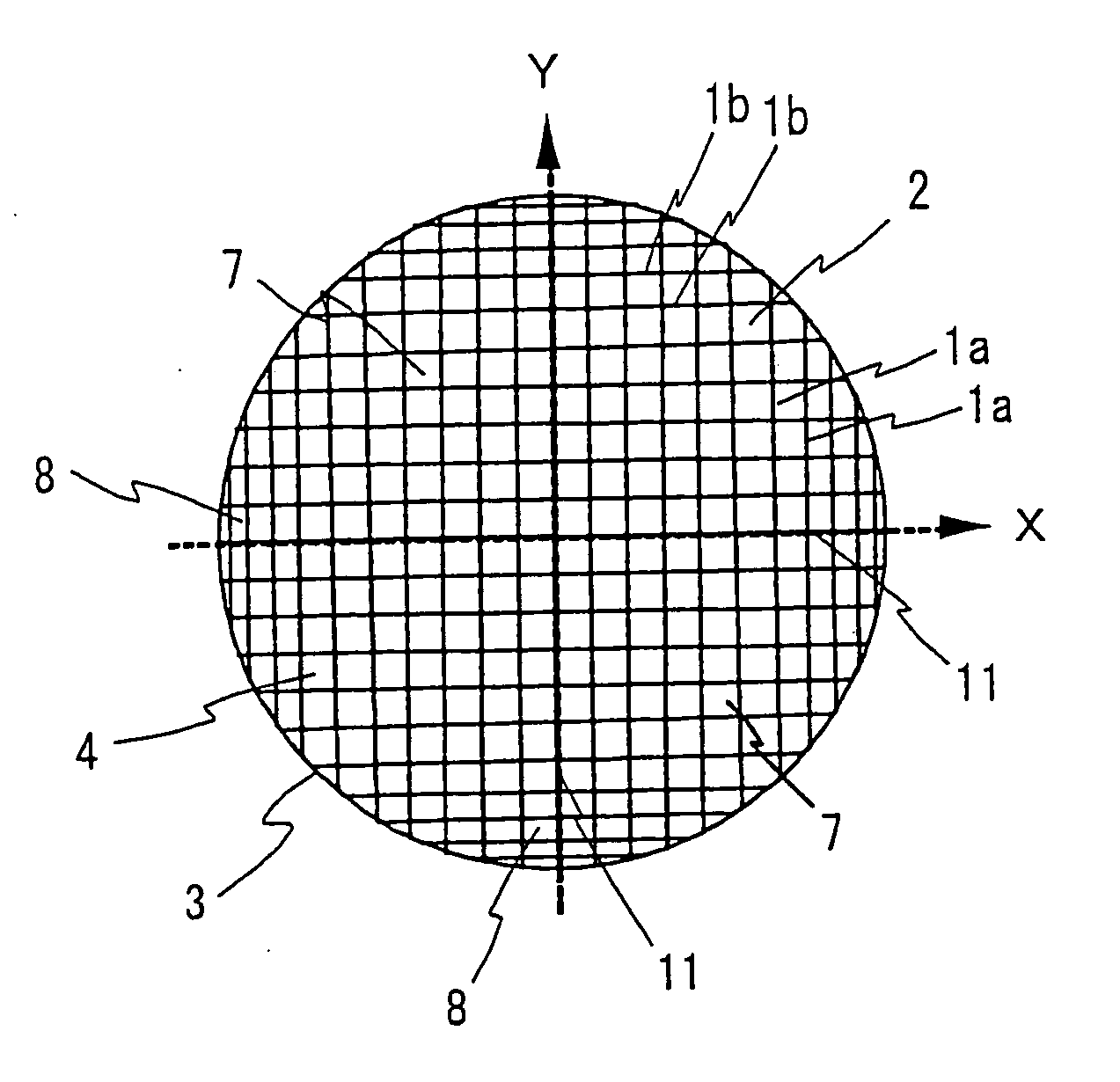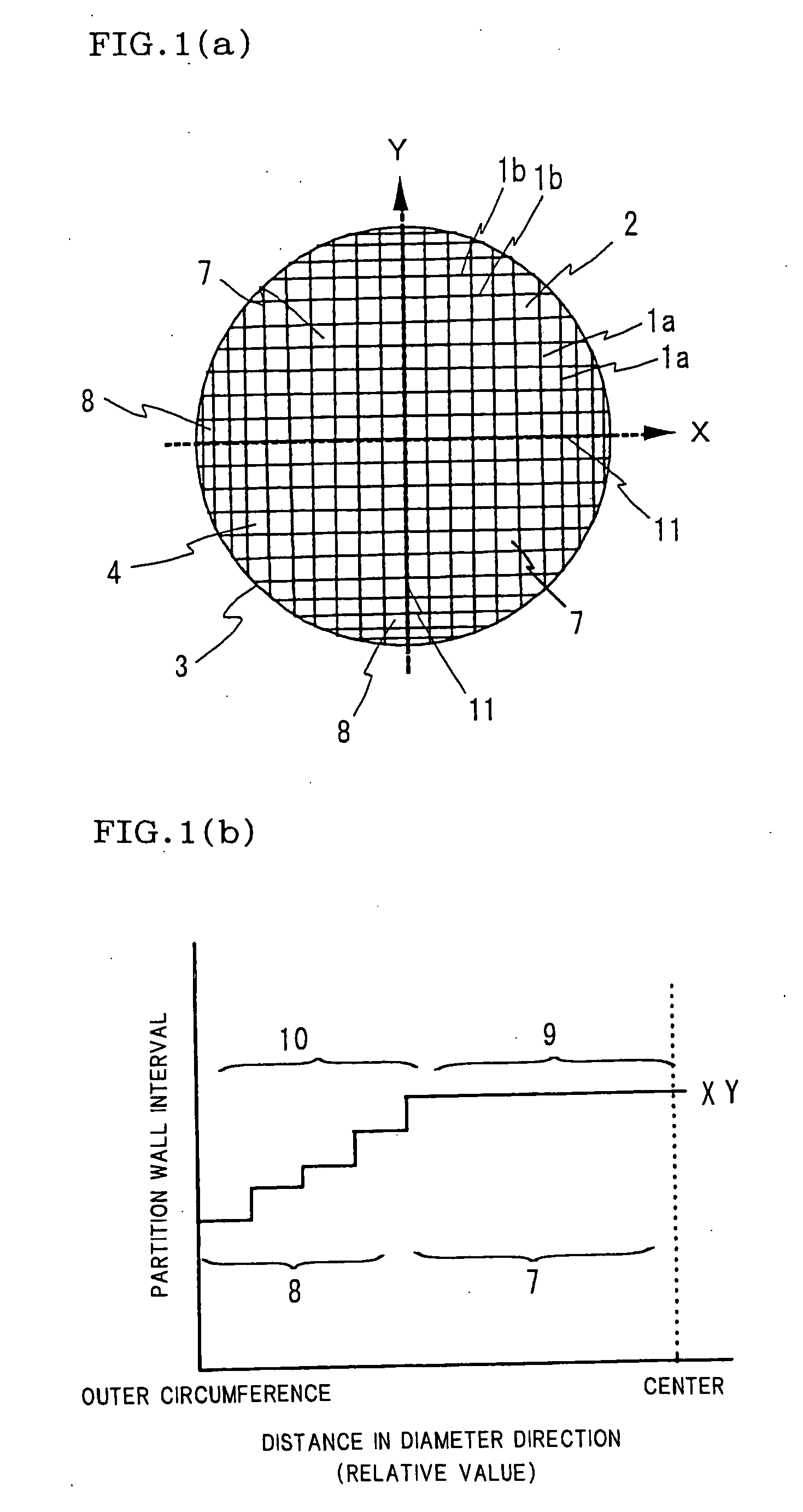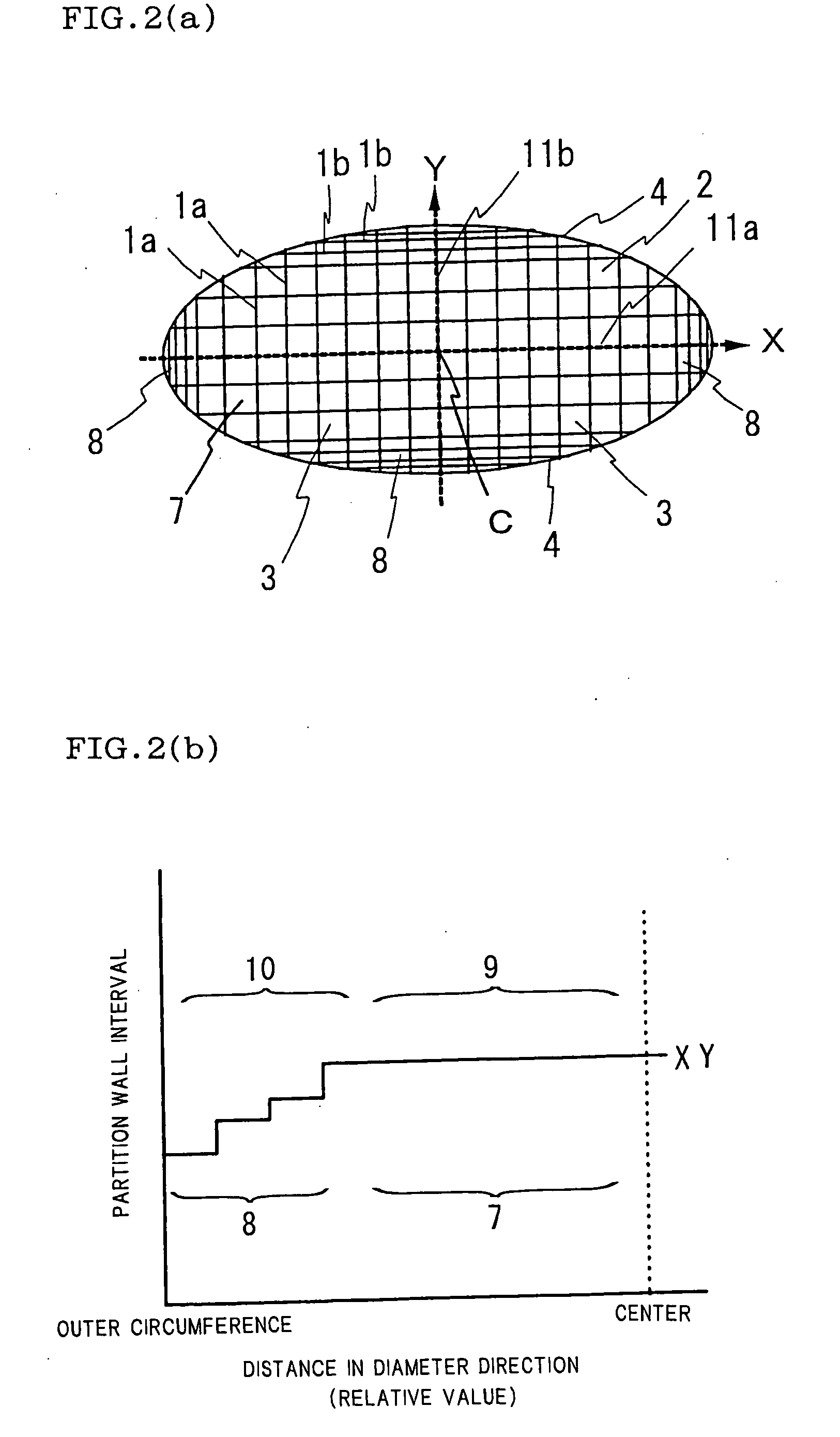Honeycomb structure, and honeycomb structure forming honeycomb
a technology of honeycomb and structure, applied in the direction of ceramic extrusion die, machine/engine, chemical/physical process, etc., can solve the problems of reducing affecting the production efficiency of honeycomb, and unable to exhibit sufficient isostatic strength. achieve high industrial applicability, high isostatic strength and thermal shock resistance, and high production efficiency
- Summary
- Abstract
- Description
- Claims
- Application Information
AI Technical Summary
Benefits of technology
Problems solved by technology
Method used
Image
Examples
example 1
[0085] Kneaded clay containing a cordierite-forming raw material as a major component was prepared according to a conventional method. The resulting clay was extruded using a die for forming a honeycomb structure having a shape as shown in FIG. 1(a), dried, and fired to prepare a honeycomb structure. The resulting honeycomb structure was in the shape of a column having a diameter of about 130 mm and a length of 150 mm, in which the porosity was 25%, the thickness of the outer circumference wall was 0.3 mm, and the partition wall thickness was 0.06 mm. The outermost circumferential partition wall interval (first) was set to 0.85 mm, the next adjacent partition wall interval (second) was set to 0.88 mm, and the partition wall intervals for 10 cells were sequentially varied geometrically. The subsequent partition wall interval was fixed at 1.27 mm. Table 1 shows the partition wall intervals and the like in the 10-cell region, specifically, in a partition wall interval change region 10 ...
examples 6 to 9
[0089] A honeycomb structure was prepared in the same manner as in Example 1 except for changing the outermost circumferential partition wall interval to 0.7 mm, changing the partition wall interval in the partition wall interval fixed region to 1.27 mm, and varying the partition wall intervals for two cells or three cells at a variation ratio shown in Table 4. The resulting honeycomb structure was subjected to a thermal shock test by heating the honeycomb structure at 800° C. for 30 minutes in an electric furnace and removing the honeycomb structure from the electric furnace to observe the presence or absence of fracture of the honeycomb structure. The results are shown in Table 4. In the case where the constitution of the honeycomb structure and the thermal shock condition were as described above, since the honeycomb structure of Example 9 having a region in which the partition wall interval variation ratio was 0.6 fractured, it was confirmed that it is preferable that the partiti...
example 10
[0090] A cordierite honeycomb structure was prepared in the same manner as in Example 1 except for changing the partition wall thickness to 0.05 mm, changing the outermost partition wall interval (first) to 0.7 mm, sequentially varying the partition wall intervals for nine cells geometrically at a variation ratio shown in Table 5, and changing the partition wall interval in the partition wall interval fixed region to 1.04 mm.
TABLE 5 PartitionPartition(Cell sidewallwallCelllength / intervalintervalflatteningpartition wall(mm)variation ratioratiothickness)2Outermost0.730.041.4392circumferentialpartitionwalls (first)Second0.760.041.4392Third0.790.041.3392Fourth0.820.041.3392Fifth0.850.041.2392Sixth0.890.041.2392Seventh0.920.041.1392Eighth0.960.041.1392Ninth1.000.041.0392Partition wall1.04interval fixedregion
PUM
| Property | Measurement | Unit |
|---|---|---|
| thickness | aaaaa | aaaaa |
| thickness | aaaaa | aaaaa |
| porosity | aaaaa | aaaaa |
Abstract
Description
Claims
Application Information
 Login to View More
Login to View More - R&D
- Intellectual Property
- Life Sciences
- Materials
- Tech Scout
- Unparalleled Data Quality
- Higher Quality Content
- 60% Fewer Hallucinations
Browse by: Latest US Patents, China's latest patents, Technical Efficacy Thesaurus, Application Domain, Technology Topic, Popular Technical Reports.
© 2025 PatSnap. All rights reserved.Legal|Privacy policy|Modern Slavery Act Transparency Statement|Sitemap|About US| Contact US: help@patsnap.com



